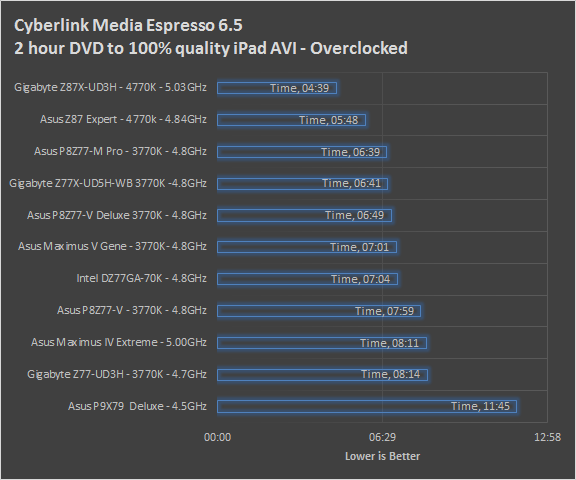Section III - Performance Tests, Real-World
Here we have two tests that are designed to put the performance of the motherboard and its subsystems to the test. Both require good CPU, Memory, HDD and even to a lesser extent audio and network performance. The two tests we chose were Lightwave 3D 9.6 and CyberLink’s Media Espresso. We will be adding at least one more real-world test to this battery in the near future, but for now these two cover quite a bit.
Lightwave 3D 9.6 x64 -
Lightwave is another industry standard application for 3D animation and rendering. It has a large tool base and the rendering engine is highly threaded (when using the right render model). This application is also capable of expanding to 4k resolutions as well as ray tracing for rending the light sources. For our testing we use frame 470 of the Pinball scene found in the LW 9 Content folder. This uses the newer perspective camera that is better suited to a multi-CPU/Core environment. This camera style also uses ray tracing and a much improved anti-aliasing method. Settings are shown below in the attached screen shot. Of course these are single frame renders and they are not a complete picture; for that you have to take into account the number of frames an average project would have. In a typical 30 second commercial you will have around 840 to 960 frames (at 28 – 32 FPS) this means that you have to multiply the time of a single frame by that number just to get a vague idea of how long that 30 seconds would take. This is because each frame will have a different render time based on complexity.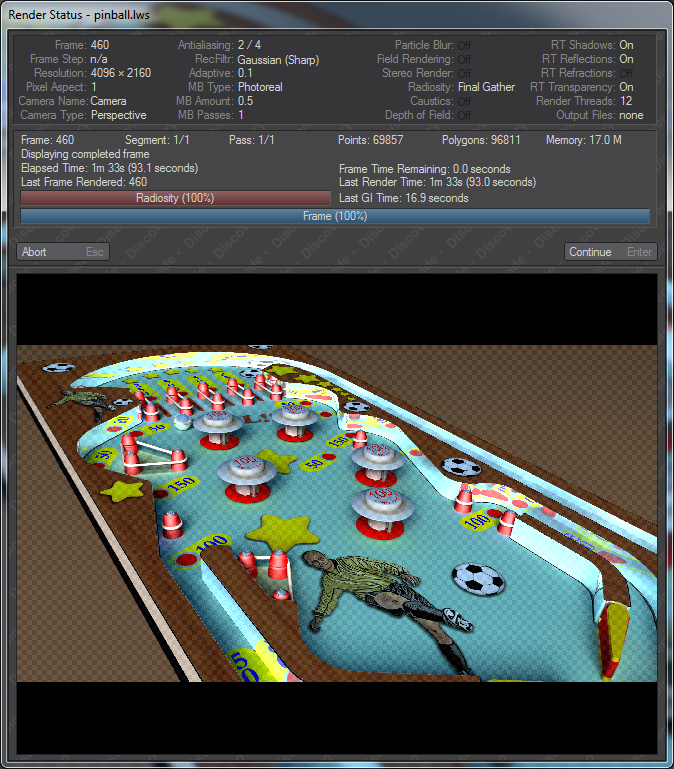

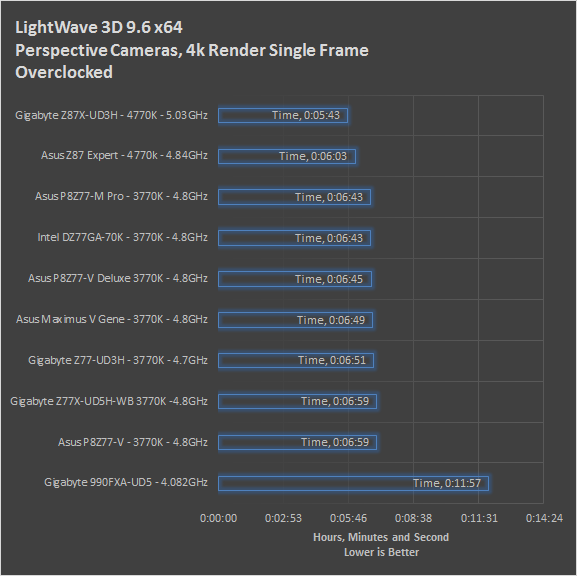
The rendering performance we see with LightWave 3D version 9.6 is pretty impressive. At stock speeds our 4k frame renders at around 7 minutes while our overclocked testing has us hitting just under 6 minutes (5:43). The impact of this is shown quite clearly in our project projections.
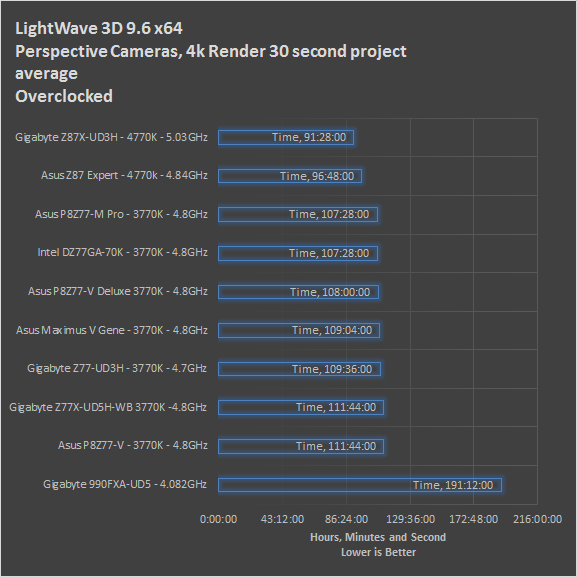
LightWave 3D 11 x64 -
Lightwave is another industry standard application for 3D animation and rendering. It has a large tool base and the rendering engine is highly threaded (when using the right render model). This application is also capable of expanding to 4k resolutions as well as ray tracing for rending the light sources. For our testing we use frame 308 of the Flocking-Alien Army scene found in the LW 11 Content folder. This uses perspective cameras which is better suited to a multi-CPU/Core environment. This camera style also uses ray tracing and a much improved anti-aliasing method. Settings are shown below in the attached screen shot. Of course these are single frame renders and they are not a complete picture; for that you have to take into account the number of frames an average project would have. In a typical 30 second commercial you will have around 840 to 960 frames (at 28 – 32 FPS) this means that you have to multiply the time of a single frame by that number just to get a vague idea of how long that 30 seconds would take. This is because each frame will have a different render time based on complexity.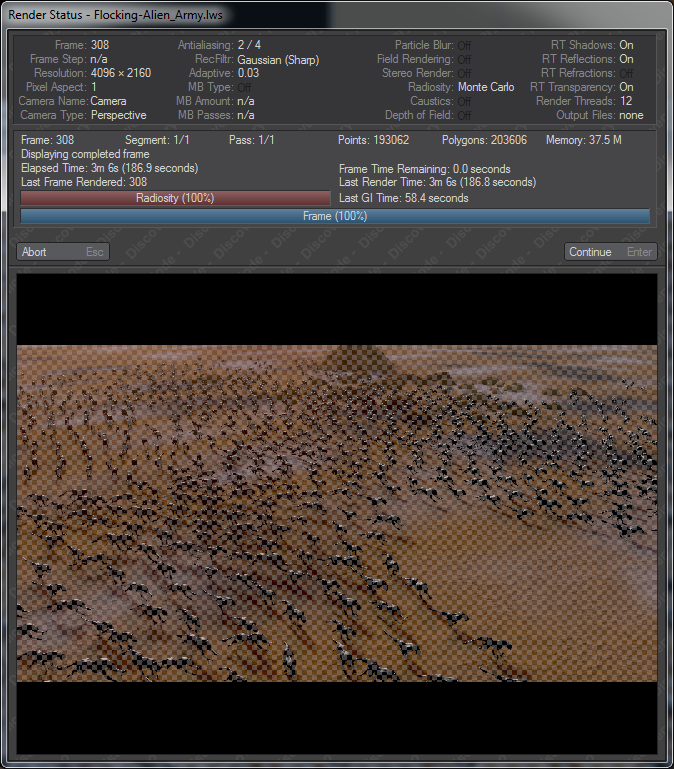

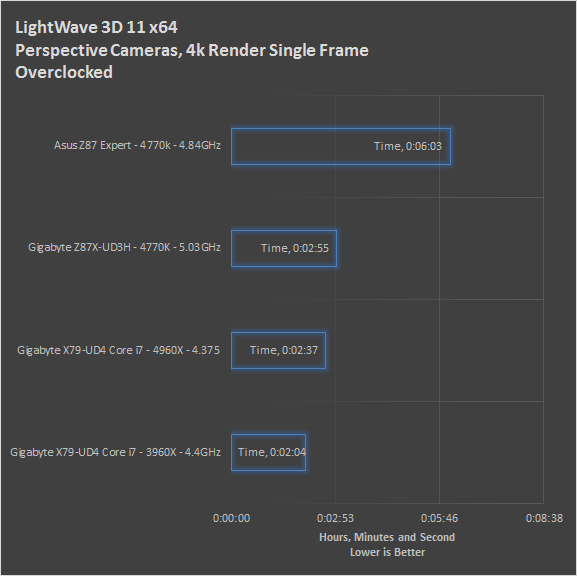
Here we see some interesting numbers. As we are just starting to use LightWave 11 in our testing we added in the Core i7 4960X and 3960X just for reference. This does make the numbers look a little odd, but does not hide the fact that the Z87X-UD3H does quite well in rendering under the pressure of the LightWave 3D 11 engine.
What is very interesting is that when we kicked the Intel 4770K up to 5GHz we hit performance levels that almost match what we see with the much more powerful 2011 Core i7 CPUs.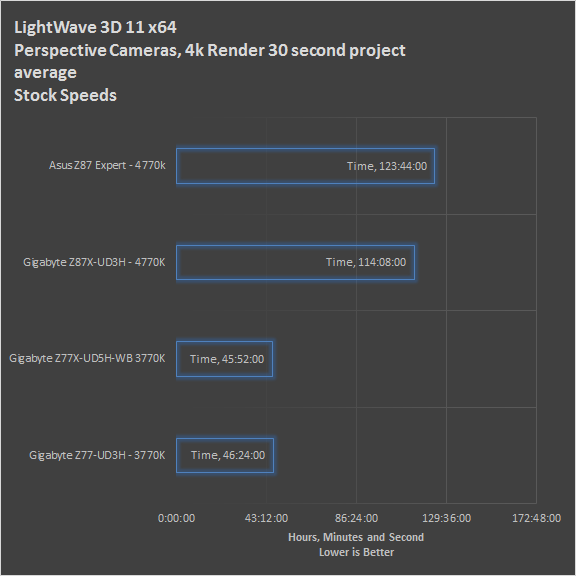

CyberLink Media Espresso 6.5 -
After having various issues with AutoGK and Intel CPUs with more than four cores we have changed our Media Encoding test to use Media Espresso from CyberLink. Although this new utility does not have the same ability to transfer directly from DVD it is still a good test to transfer different media types into a usable format for your iPad, iPod, or other media player. Our test involves using multiple (Six) 20 minute media files and transcoding them for an iPad. This gives us a very good indication of how well a motherboard can handle this type of work load.
Gigabyte’s Z87X-UD3H ends up on top in our transcoding tests… well it comes out on top by 3 seconds. Still it is almost two full minutes faster in transcoding tests over the older Z77+ Sandy Bridge/Ivy Bridge combination. In all we can see a real world example of Haswell’s multimedia improvements in this test.